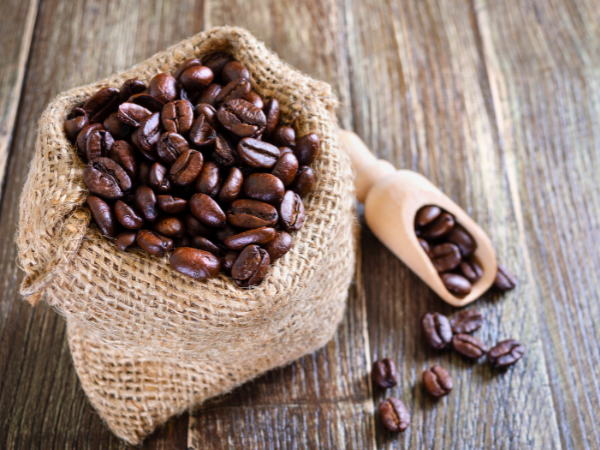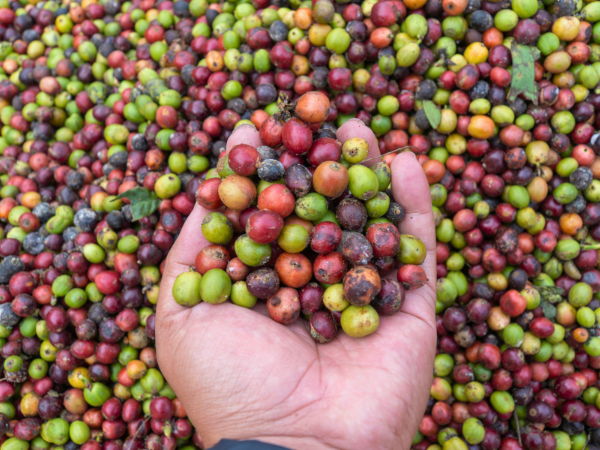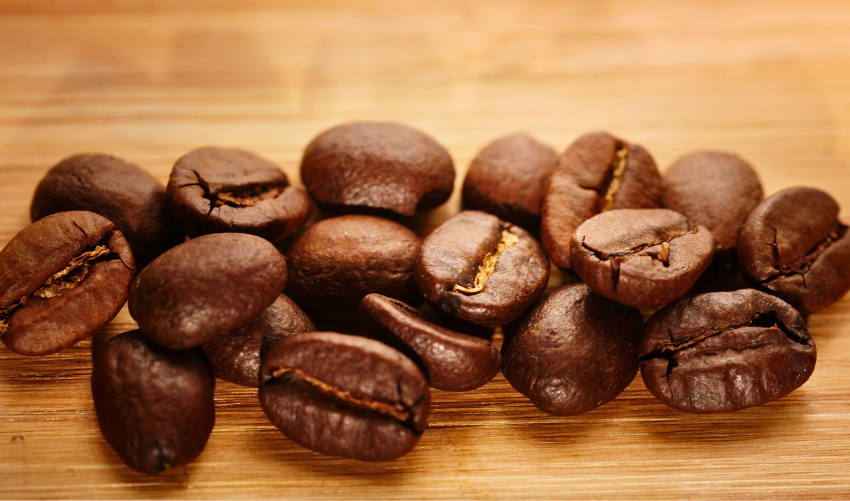This guide highlights some of the best coffee beans and trusted brands available today. Whether you’re after bold intensity or a smooth, balanced cup, there’s something here for every taste.
From single-origin arabica to robusta-rich blends, these picks deliver flavor, quality, and reliability. Explore the options to find the perfect roast for your daily brew.
Why advisorcoffee.com Is Your Coffee Companion
AdvisorCoffee.com is here to be your trusted coffee companion, offering expert insights and unbiased reviews to help you navigate the vast coffee landscape.
Your Resource For Informed Choices
Coffee lovers often face the challenge of choosing between countless options, and that’s where AdvisorCoffee.com steps in. We simplify the decision-making process by offering resources tailored to your taste and budget.
Here’s how AdvisorCoffee.com stands out:
- Expert Insights: Gain access to well-researched articles written by coffee experts, covering everything from bean types to brewing techniques.
- Unbiased Reviews: Discover honest evaluations of coffee brands and products, helping you choose the best options for your preferences.
- Brew Better: Learn practical tips and tricks to enhance your brewing skills and enjoy a richer coffee experience.
AdvisorCoffee.com aims to simplify your coffee journey. It empowers you to make informed decisions, ensuring every cup is tailored to your taste.
Types Of Coffee Beans
There are four main types of coffee beans: Arabica, Robusta, Liberica, and Excelsa. Each has unique characteristics that make it special.
Arabica Coffee: The World’s Favorite
Known as the “world’s favorite,” Arabica offers a unique combination of flavor, aroma, and quality. Its beans are prized for their sweet and delicate profile, making it a staple in specialty coffee shops and homes worldwide.
Flavor Profile:
- Sweet and Delicate: Known for complex, nuanced flavors like chocolate, nuts, fruit, and floral notes.
- High Acidity: Contributes to a bright, lively cup that leaves a lasting impression.
- Aromatic: Often described as perfumey, with a pleasant fragrance that enhances the coffee experience.
Physical Features:
- Oval Shape: Larger, more elongated beans with an “S”-shaped crease.
- Lower Caffeine: Typically contains 1.2-1.5% caffeine content, making it less bitter.
Usage and Serving:
- Premium Coffee: Used in most specialty coffee, pour-overs, and espresso blends for its superior quality.
- Best Served Hot: Flavors are often most prominent in hot brews, highlighting its aromatic and delicate nature.
Its unique combination of flavors, aromas, and cultivation methods make it the go-to choice for coffee lovers around the world.

Robusta Coffee: The Bold Powerhouse
Among the many varieties, Robusta coffee stands out as a bold and intense option. Known for its strong character and unique traits, Robusta is favored for its ability to deliver an energizing kick.
| Feature | Details |
|---|---|
| Hardy Plant | Resistant to disease and pests, tolerant of hot and humid climates. |
| Lower Altitudes | Thrives in warmer regions, typically from sea level to 800 meters. |
| High Caffeine | Contains 2.2-2.7% caffeine, almost double that of Arabica. |
| Rounder Shape | Smaller, more circular beans with a straighter crease. |
Robusta coffee is often described as the bold powerhouse of the coffee world. Its unique characteristics make it a favorite among those who enjoy a strong and intense brew. Here’s a detailed guide to what sets Robusta apart:
- Strong and Bold: Robusta coffee is known for its full-bodied and intense flavor.
- Characterized by Earthy, Woody, and Nutty Undertones: Its flavor profile often carries deep, rich notes.
- Higher Bitterness: The higher chlorogenic acid content adds a noticeable bitterness.
- Intense: Robusta offers a robust, less nuanced taste compared to Arabica coffee.
If you enjoy a strong and bold cup, Robusta coffee is an excellent choice. Its earthy and nutty undertones, paired with higher caffeine, deliver a truly invigorating coffee experience.
Liberica Coffee: The Rare & Unique
Liberica originating from Southeast Asia, this coffee type is loved by some for its full-bodied, smoky & woody taste, while others find its controversial flavor polarizing.
Liberica coffee is an extraordinary coffee species that sets itself apart in multiple ways. Below are some key characteristics that make it rare and unique:
- Smoky & Woody Flavor: Liberica coffee often delivers bold, full-bodied notes with hints of nuttiness or rubber-like undertones.
- Fruity & Floral Aroma: Despite its strong taste, it surprises many with a subtle fruity and floral aroma.
- Large Trees & Beans: Liberica plants can grow as tall as 20 meters, producing irregular, teardrop-shaped beans.
- Specific Climates: This variety thrives in hot, humid regions, primarily Southeast Asia, including Malaysia and the Philippines.
With its resilience and distinctiveness, Liberica coffee holds a special place in the coffee world. Whether blended into traditional brews or enjoyed solo, it offers a memorable experience for those willing to explore its complex flavors.

Excelsa Coffee: The Subtly Complex Cousin
Excelsa coffee, a distinct variety within the coffee world, is often overshadowed by its more famous counterparts like Arabica and Robusta.
| Attribute | Description |
|---|---|
| Origin | Southeast Asia, primarily Vietnam |
| Flavor Profile | Fruity & Tart, Dark & Roasty, Complex Layers |
| Body | Medium to Full |
| Market | Niche; often used in specialty blends |
| Classification | A variety of Liberica |
Excelsa coffee is prized for its unique flavor profile and versatility. A part of the Liberica family, it was once considered its own species but is now classified as a variety of Liberica.
Excelsa’s flavor complexity is what sets it apart. It offers a fascinating mix of characteristics:
- Fruity & Tart: Bright, wine-like, and fruity notes that add a lively touch to the cup.
- Dark & Roasty: Simultaneously exhibits dark, toasted, and woody characteristics that create depth.
- Complex Layers: A distinctive combination of light and dark roast attributes in a single coffee.
Primarily cultivated in Southeast Asia, particularly Vietnam, Excelsa thrives in specific climates. Its Southeast Asian origin contributes to its niche appeal.
Our Expert Coffee Brand Reviews
Each country offers unique roasts, brewing techniques, and coffee cultures. To help you navigate this aromatic adventure, we’ve created detailed reviews of top coffee brands. From regional favorites to global icons, our guide highlights the best options and what makes them special.
Best Coffee Brands By Country
Coffee is more than just a drink; it’s a cultural experience. Each country adds its own touch to coffee production, resulting in diverse flavors. Below are some of the best coffee brands categorized by country:
Each country’s coffee style caters to different palates. From Ethiopia’s fruity beans to Italy’s bold espresso, there’s a lot to explore.
Specific Brand Deep Dives
Let’s take a closer look at some standout coffee brands and their unique offerings. These brands have earned their reputation for quality and flavor:
- Lavazza (Italy): Known for its rich espresso blends, Lavazza offers a velvety texture and bold taste. Their Super Crema blend is a favorite for its balanced mix of Arabica and Robusta beans.
- Blue Bottle (USA): A leader in specialty coffee, Blue Bottle emphasizes fresh roasts. Their Giant Steps blend is a standout, featuring chocolatey and malty notes.
- Death Wish Coffee (USA): Famous for being one of the strongest coffees, this brand uses high-caffeine Robusta beans. It’s ideal for those seeking an extra energy boost.
- Volcánica Coffee (Costa Rica): Known for single-origin beans, this brand offers a wide selection. Their Ethiopian Yirgacheffe roast delivers floral and fruity flavors.
- Trung Nguyên (Vietnam): A go-to for Vietnamese coffee, Trung Nguyên specializes in bold, rich blends. Their G7 Instant Coffee is popular for its convenience and flavor.
Each of these brands has something unique to offer, making them worth trying for any coffee lover. Their distinct qualities and flavors stand out in the crowded coffee market.
Coffee Processing Methods: From Cherry To Bean, How Flavor Is Born
Coffee processing methods play a key role , influencing the taste, body, and acidity of the coffee. Each technique imparts unique characteristics, allowing us to experience a diverse world of coffee profiles.
1. Washed (Wet) Process: The Clean & Bright Method
The washed process, also called the wet process, is known for producing clean and crisp coffee profiles.
Depulping After Harvest
In the washed (wet) process, coffee cherries are depulped right after harvest. This removes the outer skin and reveals the beans inside.
Fermentation in Water Tanks
The beans are then placed in fermentation tanks filled with water. During this stage, natural microbes break down the sticky mucilage around the beans, prepping them for the next processing steps.
After fermentation, the beans undergo washing & drying. The mucilage is washed off, leaving clean beans, which are then dried under the sun or using mechanical dryers. This process is renowned for producing coffees with high clarity, bright acidity, and distinct origin flavors.
| Characteristics | Description |
|---|---|
| Clean & Crisp | Bright acidity and clear flavor notes. |
| Lighter Body | Elegant and refined mouthfeel. |
Washed coffees often highlight the terroir, making them popular among coffee enthusiasts seeking clarity in their cup.
2. Natural (Dry) Process: The Fruity & Full-bodied Method
The natural process, also known as the dry process, involves sun drying whole coffee cherries. The cherries are spread out on raised beds or patios, allowing the fruit to ferment around the bean. This method imparts sugars and flavors from the fruit into the bean.
Once dried, the cherries undergo hull & mill, where the outer layers are removed through mechanical hulling. This process often results in coffee with fruity & sweet notes, such as berries, tropical fruits, chocolate, or wine-like flavors. It typically has a heavier body, offering a creamier mouthfeel with low acidity.
- Fruity & Sweet: Intense fruit flavors dominate.
- Heavier Body: Rich and creamy texture.
- Low Acidity: Softer and muted acidity.
The natural process is ideal for those seeking bold, flavorful profiles with complex fruit undertones.
Honey Process (Pulped Natural): The Balanced Approach
The honey process, or pulped natural method, strikes a balance between washed and natural processes. It begins with partial pulping, where the skin is removed but a portion of the sticky mucilage remains on the bean. This mucilage contributes to the flavor during controlled drying, where beans are dried with the pulp still adhering to them.
The honey process produces coffee with sweet & balanced flavors, combining fruitiness from the natural process and cleanliness from the washed process. It can develop distinct honey-like notes, with caramel or floral undertones.
| Honey Process Variants | Mucilage Remaining | Flavor Impact |
|---|---|---|
| White Honey | Minimal | Light and clean. |
| Yellow Honey | Moderate | Balanced sweetness. |
| Red Honey | High | Intense fruit notes. |
| Black Honey | Maximum | Rich and bold. |
The honey process is versatile, offering varied results depending on the amount of mucilage left and drying conditions.
4. Wet-Hulled (Giling Basah): The Indonesian Signature
Wet-hulled, or Giling Basah, is a unique coffee processing method originating from Indonesia. It starts with partial drying & hulling, where cherries are pulped, fermented briefly, and dried to about 30-50% moisture. At this high moisture content, the parchment layer is removed in a process known as wet hulling.
After wet hulling, the beans undergo final drying, often in humid conditions, which can be challenging. This method produces coffee with earthy & bold flavors, characterized by woody, mushroomy, or savory notes. The coffee typically has a heavy body & low acidity, offering a thick mouthfeel and muted acidity.
- Earthy & Bold: Unique rustic flavors.
- Heavy Body: Thick and satisfying texture.
- Low Acidity: Softer and smoother.
Wet-hulled coffee contributes to the signature “Sumatran” or “Indonesian” taste, making it a favorite for those who enjoy a rustic profile.
Coffee Roast Levels: Decoding The Degrees Of Flavor
The roast level plays a significant role in shaping the coffee’s appearance, flavor, and even caffeine content. Whether you prefer a bright and tangy cup or a smoky and bold one, understanding coffee roast levels will help you choose the perfect brew for your taste.
1. Light Roast: Bright & Origin-Focused
Light roast coffee highlights the bean’s natural origin, offering a nuanced experience that reflects where it was grown. Rather than relying on the roast profile for flavor, this style lets the coffee’s true character shine—whether it comes from high-altitude Ethiopian farms or volcanic soil in Central America.
Appearance:
- Light brown in color
- Matte surface with no visible oil
- Often smaller and denser due to less roasting expansion
Flavor Profile:
- Crisp, complex notes that range from citrus, berries, and stone fruits to floral and herbal tones
- High acidity and a lighter body
- Can have a honey-like sweetness or a tea-like clarity, depending on the origin
Caffeine Content:
- Slightly more caffeine than darker roasts, as less roasting means less degradation of caffeine molecules
- Often favored for morning brews due to its stimulating yet smooth effect
Best Brewing Methods:
- Pour-over (Hario V60, Chemex, Kalita Wave)
- Cold Brew (slow steep)
- Aeropress
Light roasts are perfect for those who enjoy bright, vibrant flavors and want to explore the pure essence of a coffee’s origin. Their clarity and complexity make them especially appealing to single-origin enthusiasts and anyone who values a clean, lively cup.
2. Medium Roast: Balanced & Versatile
Medium roast coffee is often considered the sweet spot between light and dark. It provides a satisfying middle ground—retaining some of the bean’s original flavors while adding the warmth and depth developed through roasting. This balance makes it a reliable option for a wide range of preferences and brewing techniques.
Appearance:
- Medium brown color
- May show a light oil sheen
- Slightly larger and more expanded than light roast beans
Flavor Profile:
- Notes of caramel, chocolate, toasted nuts, and mild spices
- Medium acidity and fuller body
- Smooth, rounded taste with gentle complexity
Caffeine Content:
- Moderate caffeine level
- Slightly lower than light roasts due to longer roast time
Best Brewing Methods:
- Drip coffee makers
- French press
- Espresso (for those who prefer a milder shot)
Medium roasts are ideal for coffee drinkers who want a well-rounded, easy-to-enjoy cup. Their approachable flavor, subtle sweetness, and brewing flexibility make them a dependable everyday choice.
3. Medium-Dark Roast: Rich & Bold
Medium-dark roast coffee delivers a deeper, more robust flavor thanks to longer roasting that caramelizes the bean’s natural sugars. This process creates a bold profile where sweetness meets subtle smokiness, offering a complex and satisfying cup.
Appearance:
- Dark brown beans with a noticeable oily sheen
- Larger, slightly cracked surface due to roasting expansion
Flavor Profile:
- Rich notes of dark chocolate, toasted nuts, and gentle spices
- Lower acidity with a fuller, heavier body
- Smooth and well-rounded taste
Caffeine Content:
- Slightly less caffeine than lighter roasts due to prolonged heat exposure
Best Brewing Methods:
- Espresso drinks such as lattes and cappuccinos
- French press and strong drip coffee
Medium-dark roasts appeal to those who appreciate a bold coffee experience without overwhelming bitterness. Their rich flavors and smooth finish make them perfect for both espresso lovers and fans of full-bodied brewed coffee.
4. Dark Roast: Smoky & Intense
Dark roast coffee is defined by its bold, smoky flavors that come from extended roasting. This process often overshadows the bean’s original characteristics, creating a powerful and intense coffee experience that appeals to those who prefer a strong, full-bodied brew.
Appearance:
- Almost black beans
- Shiny, oily surface due to the roasting oils
Flavor Profile:
- Smoky, charred, and bittersweet notes dominate
- Minimal presence of the original bean’s unique flavors
Caffeine Content:
- Lowest caffeine content among all roast levels, a result of longer roasting
Best Brewing Methods:
- Espresso shots with a pronounced smoky finish
- Moka pots and percolators for rich, concentrated brews
Dark roasts suit coffee lovers who enjoy a deeply robust and full-flavored cup, perfect for starting the day with a bold kick or ending it with a strong, satisfying finish.
